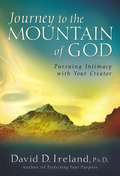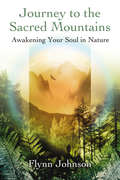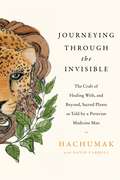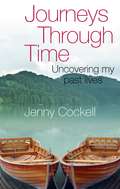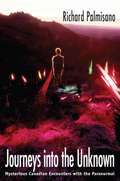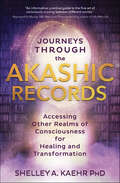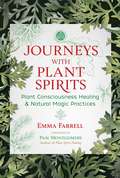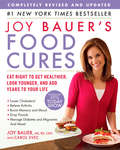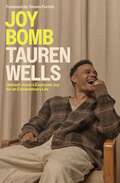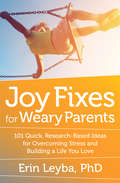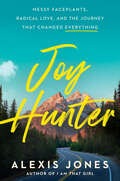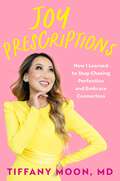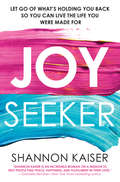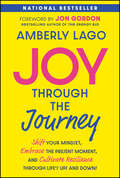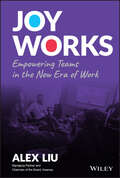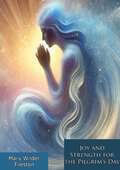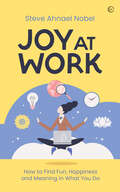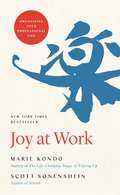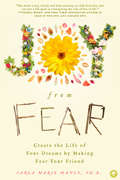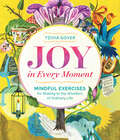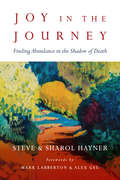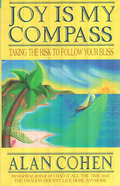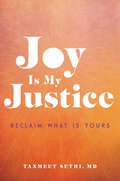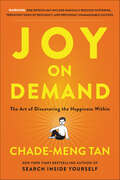- Table View
- List View
Journey to the Mountain of God: Pursuing Intimacy with Your Creator
by David D. IrelandFor some, sustaining closeness with God can be a daunting or overwhelming task, like climbing a mountain. Now Ireland has devised a practical, proven plan that will help people achieve and maintain their personal passions for God. Eight steps, each spanning five days, lead readers on the trek to intimacy. With steps including Valuing the Fear of the Lord, Morals for Mountaintop Living, How to Keep Spiritual Fires Burning, and Unleashing Gods Blessings, Ireland moves readers forward in their personal journeys. In addition to exercises that move readers through each of these steps, Ireland offers questionnaires and surveys designed to help readers assess and improve their own spiritual conditions.
Journey to the Sacred Mountains
by Flynn JohnsonWeaving together three wisdom traditions-Native American spirituality, depth psychology, and Buddhism-into a profound understanding of the soul's journey, this resource offers vision quests and other nature-based experiences as a way to reestablish an intimate connection with the earth, humankind's original home. The knowledge and beauty of an ancient Sioux story, which serves as the guiding thread of the book, teaches the value of setting out on a quest in the natural world to discover who and what one truly is, while notions of a Buddhist path illustrate how to free oneself from constraining beliefs and conditioning. Seeking to explore the core center of any spiritual quest-a direct, unmediated experience of the sacred-rather than ascribe to one religion or dogma, this inspiring guide is a timely voice that advocates an equitable, sustainable way of living on the earth.
Journeying Through the Invisible: The craft of healing with, and beyond, sacred plants, as told by a Peruvian Medicine Man
by David Carroll HachumakJourney into the world of Ayahuasca and healing. A mysterious and powerful plant medicine with curative powers that is drunk as a tea during a sacred ceremony, Ayahuasca has been known to change people's lives dramatically. But what was once a healing experience practiced only by Indigenous South Americans - and sought out by the adventurous few - has, in the past fifty years, become increasingly popular around the world.Hachumak, a Peruvian medicine man, has been practicing traditional healing arts in his country for more than twenty years. His unique approach is based on ritualistic simplicity and highlights the essence of the Art, which includes the borrowed forces from Nature. In this remarkable book, he shares his knowledge and experiences to broaden our understanding of this powerful medicine and protect it from misuse and exploitation.Whether you are among the uninitiated and curious, or a seasoned journeyer, you will gain a deeper understanding of what shamanism is and how and why it works, as well as its possibilities and limitations. Hachumak reveals his own path to becoming a shaman and explains how a well-crafted Ayahuasca ceremony unfolds when run by an experienced curandero. He describes in detail what to expect - both physically and psychologically - while under the guidance of the sacred plants.With Hachumak as our experienced and trusted guide, Journeying Through the Invisible offers a new and healing way of seeing ourselves and the world around us.
Journeys Through Time: Uncovering my past lives
by Jenny CockellJenny Cockell has always had memories of living before. In her first book, 'Yesterday's Children', she described her search for the past life family which had haunted her from her earliest childhood. She remembered living as Mary Sutton, an Irishwoman who had died over 20 years before she was born. She gave an extraordinary account of how she successfully found Mary's surviving children, and was reunited with them in the present.Her new book, 'Journeys Through Time', brings readers up to date with her story. Jenny gives details of the four past lives that she remembers most clearly and explains how she has tried to trace them all. In particular, she remembers a life in Japan, which she has desperately sought to verify and uncover. Beginning with flashes of memories that she experienced in childhood, Jenny describes how she 'found' Mary and her children, her subsequent researches into her Japanese life, and what it all means. It is a page-turning account of one woman's journey to find the lives she lived before.
Journeys Through Time: Uncovering my past lives
by Jenny CockellJenny Cockell has always had memories of living before. In her first book, 'Yesterday's Children', she described her search for the past life family which had haunted her from her earliest childhood. She remembered living as Mary Sutton, an Irishwoman who had died over 20 years before she was born. She gave an extraordinary account of how she successfully found Mary's surviving children, and was reunited with them in the present.Her new book, 'Journeys Through Time', brings readers up to date with her story. Jenny gives details of the four past lives that she remembers most clearly and explains how she has tried to trace them all. In particular, she remembers a life in Japan, which she has desperately sought to verify and uncover. Beginning with flashes of memories that she experienced in childhood, Jenny describes how she 'found' Mary and her children, her subsequent researches into her Japanese life, and what it all means. It is a page-turning account of one woman's journey to find the lives she lived before.
Journeys into the Unknown: Mysterious Canadian Encounters with the Paranormal
by Richard PalmisanoThis fascinating and bloodcurdling book takes the reader through a collection of amazing ghost stories and paranormal investigations across Ontario that have never before been reported. The circumstances behind fifteen unusual cases of hauntings and ghostly manifestations are explored together with the detailed sagas of full-scale investigations into six further spooky inexplicables occurring in or near Toronto. The book concludes with a look into a complete investigation of a haunting, including a guide that explains the techniques used to conduct a paranormal investigation. The final section that explains the theories behind what a ghost is, how they manifest, and where they hide - challenging the classic theories of life-after-death research. So turn on all the lights, keep your back to the wall, and be prepared to take a journey into the reality of the unexplained.
Journeys through the Akashic Records: Accessing Other Realms of Consciousness for Healing and Transformation
by Shelley A. KaehrGuide Your Soul’s Path with the Invisible Library of Ultimate KnowledgeJourney into the divine depths of the Akashic Records and access your unique soul information. Packed with hands-on exercises—including past-life healing, psychic protection, and meeting otherworldly guides—this groundbreaking book empowers you to find meaningful answers to life's most important questions. The Akashic Records consist of all thoughts, deeds, and actions that have ever been created in the past, present, or future. Since her near-death experience in 2000, Shelley A. Kaehr, PhD, has accessed this cosmic storehouse frequently. Now she teaches you how to enter the records for yourself and shares historical examples, client stories, insights from famous seers, and more. This phenomenal book helps you heal past-life issues, reveal your soul purpose, and enjoy greater awareness and peace.
Journeys with Plant Spirits: Plant Consciousness Healing and Natural Magic Practices
by Emma Farrell• Presents meditation journeys with specific plant and tree spirits, such as Mugwort, Rosemary, Dandelion, Yew, Elder, and Wormwood • Details how to achieve a calm mind, cleanse your energy field, and connect with your heart in preparation for meditating with the plants • Includes a progressive series of introductory meditations, adapted from wisdom traditions, to lay the foundation for working with plant spirits Our ancient ancestors understood the language of nature, enabling them to communicate innately with plants. By quieting the mind through meditation, we too can tap into the vibratory resonance of plants and receive their wisdom and healing. In this guide, Emma Farrell explains how to take your connection and relationship with nature to a deeper level and access plant spirit healing through meditation with plants. She explores the nature of plant consciousness and how plants perceive, drawing on indigenous and shamanic teachings. She details how to achieve a calm mind, cleanse your energy field, and connect with your heart in preparation for meditating with plants and trees, showing how the plants can support us not only in the cleansing process but also in teaching us how to sense what is in our energy field. Offering a progressive series of preparatory meditations, adapted from wisdom traditions, the author reveals how to lay the foundation for working, communicating, and developing relationships with plant and tree spirits for personal development, spiritual connection, and inner peace. She then presents meditation journeys with specific plant spirits, focusing on specific frequencies within the plant&’s bio-resonance to assist you. For example, the meditation with Mugwort works with the plant spirit&’s qualities of alignment and self-awareness to assist you with grounding and developing inner vision, while the meditation with Dandelion helps you break old habits by working with the plant&’s qualities of release, reconnection, and fearlessness. Revealing how each plant is an expression of the soul force of Mother Nature and carries a unique blend of her medicine and wisdom, this guide details step-by-step how to effectively work with plant spirits for emotional and spiritual healing, enabling you to awaken the eternal spirit, or soul, to become truly multidimensional and whole.
Joy Bauer's Food Cures: Treat Common Health Concerns, Look Younger & Live Longer
by Joy Bauer Carol SvecComprehensively updated with cutting-edge research and expertise from one of the country's foremost nutritionists, Joy Bauer's Food Cures shows you how common health concerns--from beauty issues to life-threatening diseases--can be managed, treated, and sometimes even cured by the foods you eat. Inside you will find easy-to-follow 4-step food prescriptions, customizable and convenient meal plans, and delicious recipes for your favorite meals and snacks. With Joy's wisdom and practical, medically sound advice, you will learn how to use food as nature's ultimate medicine.
Joy Bomb: Unleash Jesus's Explosive Joy for an Extraordinary Life
by Tauren WellsYou were wired for joy. Not put-a-fake-smile-on-it joy. Not I-feel-guilty-about-being-sad joy. But deep-down, laugh-out-loud, overflowing joy that thrives no matter your personality or circumstances.It's time to take your joy back! Maybe you're wondering why life has to be so confusing. Maybe you're tired of feeling anxious. Maybe you're just blah lately. Bible teacher, songwriter, and one of Christian music's most contagiously joyful voices, Pastor Tauren Wells has a powerful reminder for you: Jesus' first message was about how to be truly happy. Think about it: How important to the heart of God must your joy be if Jesus uses the word "happy" eight times in his first recorded sermon on planet Earth (aka: the Beatitudes)?In Joy Bomb, Pastor Tauren helps us embrace the truth that God's greatest longing is not only for our holiness, but for our happiness. This biblically rooted, exuberantly hope-filled book walks us through:Eight life-changing ways to reorient our lives toward joyUnderstanding why joy is not dependent on our emotional state or the state of the worldWhat attitudes or behaviors keep us from experiencing God's joyHow we can become freer in worship, life, and our relationship with GodWhy Jesus' ways of living don't just create warm fuzzies but create joy deep within us We find more in this life than we ever imagined when we understand the patterns and promises of God's kingdom. More fulfillment, more purpose, more satisfaction--and radical joy.
Joy Fixes for Weary Parents: 101 Quick, Research-Based Ideas for Overcoming Stress and Building a Life You Love
by Erin LeybaModern parenting presents fresh challenges, including unrelenting time pressures, lack of support systems, and work demands, that often leave parents drained and worn-out. Erin Leyba, the mother of three young children, has been counseling parents on these issues for almost twenty years. She has developed techniques that help parents not only cope but also feel joy — in their parenting and in their relationships with their partners. Leyba draws from the latest research about child development, attachment, successful marriages, and mindfulness to create effective, doable solutions for balancing, simplifying, and communicating. She presents powerful tools that parents can use right away to de-stress, stay energized, and create more warmth and passion with loved ones. Whether new, veteran, overwhelmed, exhausted, or just interested in doing better than they are, parents will find proven help here.
Joy Hunter: Messy Faceplants, Radical Love, and the Journey That Changed Everything
by Alexis JonesA timely, colorful, and cinematic memoir chronicling one woman&’s journey to rediscover her own power, resilience, and happiness&“Joy Hunter gives us all permission to be human and invites us to radically love ourselves for exactly who we are.&”—KRISTEN BELLI took a bone-deep breath as we drove away from my state, my city, my street, and my house, escaping my life and leaving behind all my broken parts.With a successful speaking career putting her on the road 250 days a year, a slew of prestigious awards for her activism, the hugely successful book I Am That Girl, and a happy marriage, Alexis Jones was living a seemingly charmed life. But the principles of self-care, setting boundaries, and eschewing perfectionism that she espoused in her talks didn&’t seem to translate into her own life; she still never seemed to feel &“enough&” inside. Then, in a matter of months, things started to fall apart on the outside, too: She discovered that the man she&’d always called dad was not her biological father, she had a devastating miscarriage, and the pandemic sidelined her travel schedule—and paycheck. A self-described &“productivity junkie,&” she was forced to slow down for the first time in her life.Hoping that time away would be a good distraction from all the chaos and heartbreak, Alexis rented an RV and set out for the open road to explore the rugged American west with her husband and their best friend. For her, the trip was both healing and disruptive. In the presence of nature&’s majesty, she re-learned the art of sitting still and surrendering to the unknowable; along treacherous hiking trails she wrestled with her self-doubt and fear of failure; and through profound conversations with friends old and new, she reconnected to the power of sisterhood and began to rebelliously reconsider her priorities and ambitions—for herself and whatever shape her family might take going forward. A soulful memoir of seeking and finding, Joy Hunter traces Alexis&’s quest to reclaim her voice and find wholeness within. Along the way she discovers that there is always purpose to our pain and that happiness is not something that can simply be checked off a list. Joy, it turns out, is not a destination; it&’s a way of life.
Joy Prescriptions: How I Learned to Stop Chasing Perfection and Embrace Connection
by Tiffany MoonDoctor by day and Bravo&’s Real Housewife by night, Tiffany Moon has a prescription for releasing perfectionism and finding joy! "A must-read for anyone seeking more balance, purpose, and joy at home and at work.&”—Barbara Corcoran As a self-proclaimed &“good girl,&” Tiffany was a people pleaser and an A-student, fitting into the roles that were prescribed by her Chinese American family. As a lifelong overachiever, she accomplished a thriving career as an anesthesiologist. Yet Tiffany felt unfulfilled. She spent more time at work than at home with her family, didn&’t know how to say &“no&” to anyone, and was governed by perfectionist standards. In Joy Prescriptions, Tiffany shares her journey to reconnect with herself. In order to feel whole, she had to drop the perfectionist trope and focus on rediscovering who she was. Tiffany abandoned other people&’s expectations and ultimately discovered how to live for her true self. She put herself first and embraced more creativity and laughter. Taking surprising chances on herself, she started a candle business, starred on a reality TV series, tried her hand at stand-up comedy, and became a social media influencer.Joy Prescriptions is a must-read if you want to add more spark and joy to your life. Tiffany offers a healthy dose of introspection and healing that will release you from the constrained expectations of others and inspire you to design a joyful life that is more authentically you!&“Tiffany&’s hard-earned wisdom and heartfelt stories remind us that true wealth is all about creating a life that feels rich in every way.&” —Vivian Tu, New York Times bestselling author of Rich AF
Joy Seeker: Let Go of What's Holding You Back So You Can Live the Life You Were Made For
by Shannon Kaiser&“One of the freshest voices in mental health and wellness.&”—Marci Shimoff, New York Times bestselling author of Chicken Soup for the Woman&’s Soul Do you feel like you&’re not where you&’re supposed to be, off track or simply exhausted from trying so hard to make things work? Your &“true self&” has an easier plan—and is just aching to show you the way. The relentless pressure to succeed, measure up, and reach for ever higher goals can leave us feeling like we&’re just not good enough—or that something&’s missing. At the end of the day, after giving it our all, the last thing we want to feel is hopeless, anxious, and disconnected. International speaker and empowerment coach Shannon Kaiser understands why so many of us, despite our best intentions, cling to these patterns. Better yet, Kaiser knows how to get us out of the vicious, draining cycle. Committed to finding meaning, connection, and joy in our day-to-day lives, she&’s traveled the world in search of the universal truths and spiritual wisdom we desperately need today. Joy Seeker is her transformational approach to life, drawn from her own life-changing experiences. It is a path to discovering our true self—the hero within. The Joy Seeker plan: • Get unstuck and discover what matters most • Regain hope and faith in yourself, others, and the world • Discover the &“poetry within&”—that special thing that makes you so unique • Gain the courage to actualize yourself and your deepest desires • Live with more purpose, passion, and freedom The path of the Joy Seeker is an intimate, active pursuit filled with opportunities for journaling as well as &“Joy Jaunts&”—exercises designed to help us break out of our comfort zone. It&’s time to become your best self. It&’s time to live worry-free in your wildest dreams. It&’s time to be your own Joy Seeker. &“Who couldn&’t use some more joy in their life? Shannon is an expert in all things happiness, and this guidebook shows us what&’s possible when we remove fear and choose love.&”—Emma Loewe, Editor at mindbodygreen and co-author of The Spirit Almanac: A Modern Guide to Ancient Self-Care
Joy Through the Journey: Shift Your Mindset, Embrace the Present Moment, and Cultivate Resilience Through Life's Ups and Downs
by Amberly LagoBring joy, fulfillment, and gratitude back into your life—regardless of what you're going through right now In Joy Through the Journey, renowned resilience and transformation expert Amberly Lago delivers a one-of-a-kind exploration of finding light in life's darkest moments. She delivers a transformative discussion of how to take your joy back when life gets hard and provides readers with a guiding light for navigating life's toughest challenges. In the book, Amberly effortlessly weaves together personal stories, practical wisdom, and profound insight into creating more joy for yourself—regardless of what you're going through. You'll find actionable solutions rooted in mindfulness, resilience, and gratitude, all backed by relatable and powerful stories that will help you create a renewed sense of purpose and wellbeing. You'll also discover: Techniques for coping with the lack of fulfillment and enjoyment that so many experience in their day-to-day lives and work Practical exercises and mindset-shifting strategies to help you embrace and accept your present moment Tools to help you navigate some of life's most formidable obstacles and go from surviving to thriving A can't-miss guide to everything in your life that's worth being joyful about, Joy Through the Journey is a compelling discussion of how to return joy, fulfillment, and gratitude back to your life—no matter what your life is like now.
Joy Works: Empowering Teams in the New Era of Work
by Alex LiuJoy at work—why settle for anything less? In Joy Works: Empowering Teams in the New Era of Work, Alex Liu delivers an engaging blueprint for ensuring people feel safe and inspired at work. Liu, the managing partner and chairman of Kearney, asks, "Why would we settle for anything less than joy at work?" In the book, you'll find a step-by-step action plan for approaching joy at work using the three key drivers that determine employee happiness—people, praise, and purpose—and learn how to implement that plan for maximum results and maximum joy. The author demonstrates how to create more joy for your people at work, in both virtual and in-person environments, as well as how to incorporate joyfulness even in periods of dramatically heightened stress. He calls on his years of conversations with leaders around the world, both as an advisor to executives and through his popular podcast, Joy@Work. Readers will learn from a diverse collection of leaders, from psychologists, academics, athletes, nonprofit and board leaders, and a Broadway producer, to leaders at companies including HPE, Cisco, T-Mobile, SAP, and UPS. In the dialogues and research, readers will also find: An introduction to "ikigai," a Japanese concept meaning "reason for being"—a framework we can all use to find joy and meaning in our work An investigation into the link between social justice and joy, using conversations with leaders who have committed to making social progress a priority A new perspective on how the next generation will view joy at work, the Great Reflection, and the shifting balance of power in work cultures In-depth discussions about people, purpose, and praise: the three key elements in building a joyful work experience A call for more reflective leadership—a new approach to power leaders through uncertain and challenging times Joy Works is an essential handbook for anyone who wants to create more joy in their work — the leaders who want to shift corporate cultures, managers who are facing pressures to innovate, young people who are adamant that they can have a life and a career that's centered around joy and meaning, and anyone who thinks "joy at work" is a near-term possibility, not an oxymoron. This guide to the changing reality and opportunity of work belongs in the libraries of anyone interested in creating a more engaging and productive virtual, hybrid, or in-person workspace. Let's build more joy.
Joy and Strength for the Pilgrim's Day: Selected By The Editor Of Daily Strength For Daily Needs
by Mary Wilder Tileston"Joy and Strength for the Pilgrim's Day" by Mary Wilder Tileston is a cherished devotional classic designed to inspire and uplift readers in their daily spiritual journey. This beautifully curated collection of meditations, scriptures, and reflections offers a source of encouragement and solace for believers seeking to deepen their faith and find strength for each day.Tileston, a revered author known for her devotional works, compiles a rich tapestry of wisdom from various Christian writers, seamlessly blending their insights with her own thoughtful reflections. Each entry is carefully chosen to provide spiritual nourishment, drawing from the timeless truths of the Bible and the profound writings of saints, mystics, and theologians.The book is organized to offer daily readings, making it an ideal companion for personal devotion or group study. Each meditation is crafted to resonate with the challenges and joys of daily life, offering practical guidance and spiritual insights to help readers navigate their faith journey with grace and resilience. Themes of hope, love, trust, and perseverance are woven throughout, reminding readers of God's enduring presence and unwavering support.Tileston's gentle and reassuring tone makes "Joy and Strength for the Pilgrim's Day" accessible to readers of all ages and stages of faith. Her ability to draw from a diverse range of Christian traditions ensures that each devotion speaks to the heart and soul, fostering a deeper connection with God and a renewed sense of purpose.This book is more than just a devotional; it is a treasured companion for anyone seeking to enrich their spiritual life. Whether you are starting your day with a moment of reflection or ending it with a prayer of gratitude, "Joy and Strength for the Pilgrim's Day" offers a wellspring of inspiration and comfort. Mary Wilder Tileston's timeless collection is a beacon of light, guiding readers towards a more joyful, faith-filled, and resilient life.
Joy at Work: How to Find Fun, Happiness and Meaning in What You Do
by Steve Ahnael NobelFun and practical guide to finding joy in your work by applying Buddhist values from MBS mover-and-shaker Steve Nobel.With growing numbers of people feeling discontented at work in a post-pandemic era of the great resignation, Joy @ Work offers essential reading. Whether you are feeling aimless and bored, only hanging on for the monthly wage, stressed, overworked or burnt out, this book offers a simple philosophy: suffering happens – but we can transform it. Using Buddhist principles, Steve Nobel guides us to realising our innate gifts and reconnecting us with our authentic selves. By working through practical exercises and calming meditations you can:Learn to trust your instinctsReframe your limiting beliefsRediscover your creativityCreate copying strategies for when you're stressedRenew your love for work The world of work is evolving and Steve prompts you to change with it; transform your happy, unprofessional life into one of self-worth, passion and purpose. Let loose your trapped potential to find the work you were born to do, whether that is falling back in love with your job or moving on and finding different work that inspires you.
Joy at Work: Organizing Your Professional Life
by Marie Kondo Scott SonensheinDeclutter your desk and brighten up your business with this transformative guide from an organizational psychologist and the #1 New York Times bestselling author of The Life-Changing Magic of Tidying Up.The workplace is a magnet for clutter and mess. Who hasn't felt drained by wasteful meetings, disorganized papers, endless emails, and unnecessary tasks? These are the modern-day hazards of working, and they can slowly drain the joy from work, limit our chances of career progress, and undermine our well-being.There is another way. In Joy at Work, bestselling author and Netflix star Marie Kondo and Rice University business professor Scott Sonenshein offer stories, studies, and strategies to help you eliminate clutter and make space for work that really matters.Using the world-renowned KonMari Method and cutting-edge research, Joy at Work will help you overcome the challenges of workplace mess and enjoy the productivity, success, and happiness that come with a tidy desk and mind.
Joy from Fear: Create the Life of Your Dreams by Befriending Your Fear
by Dr. Carla ManlyIf you find yourself running away from fear, you’re running in the wrong direction. Fear demands that we move toward it, face it, and hear its messages. When we fail to do this, the price is high—chronic anxiety, sleeplessness, damaged relationships, skyrocketing pharmaceutical use, and more. In her enlightening book Joy from Fear, clinical psychologist Dr. Carla Marie Manly explains that fear is not the enemy we thought it was; fear, when faced with awareness, is the powerful ally and best friend we all need.Dr. Manly's work is firmly based in science but goes far beyond presenting the dry facts. Joy from Fear offers page after page of real-life examples, insights, easy-to-use tools, and life-changing exercises. Coining the term transformational fear, Dr. Manly illuminates the importance of embracing fear’s messages for a transformed life filled with freedom and lasting happiness.
Joy in Every Moment: Mindful Exercises for Waking to the Wonders of Ordinary Life
by Tzivia GoverHappiness is already here in this moment, just waiting to be discovered! Mindfulness expert Tzivia Gover offers an inspiring treasury of small, creative ways to shift your perspective and uncover surprising bits of joy over the course of your day. Whether you’re making dinner, commuting, exercising, working at the computer, or brushing your teeth, every moment of your life offers an opportunity to uncover happiness. Short essays are accompanied by practical exercises to try and exquisite illustrations by artist Olaf Hajek. This is the perfect gift for anyone who wants to increase their daily experience of joy.
Joy in the Journey: Finding Abundance in the Shadow of Death
by Steve Hayner Sharol HaynerHearts Minds Bookstore's Best Books of 2015, Memoir Steve Hayner was serving as president of Columbia Seminary and was healthy and fit when he found out he had terminal pancreatic cancer. He and his wife, Sharol, embarked on a journey together with their children that soon included tens of thousands of visits from friends and acquaintances via the CaringBridge website. The overwhelming response to their posts on this website attested to the surprising and engaging way that they chose to live in the face of death. As a result they uncovered the remarkable truth that God, our good Shepherd, provides a feast for us when we are in the valley of the shadow of death as well as in the green pastures. Steve was always known for signing letters and emails, "joyfully." These pages, including reflections from some of those closest to Steve and Sharol, offer us a hope-filled glimpse into what it means to walk with God in honesty, with joy, even through great pain.
Joy is My Compass (Alan Cohen title): Taking The Risk To Follow Your Bliss
by Alan CohenJoy Is My Compass is an empowering collection of insights on following one's own true path to "Joy". Alan Cohen tells readers how to devote their attention, heart, and vision to nurture the spirit in life and to hold that vision to live in joy and make happiness a priority rather than a pain.
Joy is My Justice: Reclaim What Is Yours
by Tanmeet SethiReclaim your joy and personal power and find healing in this radical guide to powerful stories and meditations rooted in neuroscience. If you think finding Joy is "too hard, too much to hope for," or only for people who are &“resilient enough,&” if you&’ve been made to feel broken or that your pain is your fault, here is a radical guide that will open you to the potential of healing, rooted in powerful stories, potent guided exercises and meditations, and neuroscience. In Joy Is My Justice, Integrative Medicine Physician and activist Tanmeet Sethi shares her methods for shifting your nervous system and biochemistry into Joy at the cellular level. You can reclaim Joy—as you reclaim your personal power, strength, and purpose—despite the burden of living in an unjust world, despite past traumas, and despite what a whitewashed wellness world says about your capacity to do so. Everyone alive will endure great pain—multiple times and usually beyond your control. An invitation to everyone whom "wellness" has left behind, Joy Is My Justice will help you rediscover your Joy, not as a destination or solution but as a profound practice for healing. Every footstep you take toward Joy is a radical act of Justice.
Joy on Demand: The Art of Discovering the Happiness Within
by Chade-Meng TanA long-awaited follow-up to the New York Times bestselling Search Inside Yourself shows us how to cultivate joy within the context of our fast-paced lives and explains why it is critical to creativity, innovation, confidence, and ultimately success in every arena.In Joy on Demand, Chade-Meng Tan shows that you don’t need to meditate for hours, days, months or years to achieve lasting joy—you can actually get consistent access to it in as little as fifteen seconds. Explaining joy and meditation as complementary things that naturally reinforce each other, Meng explains how these two skills form a virtuous cycle, and once put into motion, become a solid practice that can be sustained in daily life.For many years, meditation has been taught and practiced in cultures where almost all meditators practice full-time for years, resulting in training programs optimized for practitioners with lots of free time and not much else to do but develop profound mastery over the mind. Seeing a disconnect between the traditional practice and the modern world, the bestselling author and Google’s “Jolly Good Fellow” has developed a program, through “wise laziness,” to help readers meditate more efficiently and effectively. Meng shares the three pillars of joy (inner peace, insight, and happiness), why joy is the secret is to success, and demonstrates the practical tools anyone can use to cultivate it on demand.
